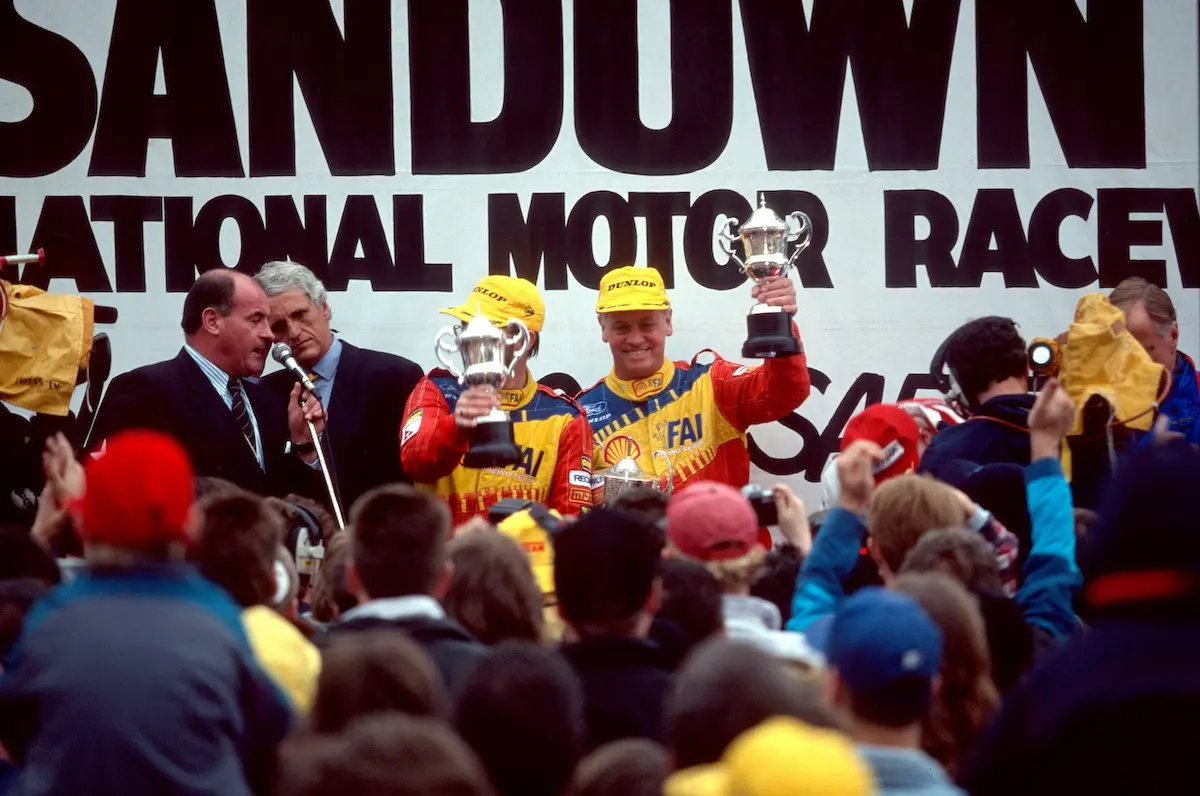Explained: Is Sandown a form guide for Bathurst?
The Penrite Oil Sandown 500 and Repco Bathurst 1000 may be run on different tracks in two different states but they have been intertwined in Australian motorsport history for more than 50 years.
Uniquely, each are held over 161 laps given the Melbourne circuit is 3.1-kilometres, half the distance of Bathurst’s 6.2-kilometre Mount Panorama course.
The Sandown enduro began in 1964 (one year after the Armstrong 500 moved from Phillip Island to Bathurst) as a six-hour international touring car race, two years after the Melbourne circuit had first opened.
It ran again in 1965 but disappeared for a few years until the Light Car Club of Australia took over promotion at the circuit and returned a touring car endurance race to the Sandown racing schedule in 1968.
Organisers based the class structure (based on the price of cars) on that used for Bathurst’s Hardie-Ferodo 500 and picked a September date, instantly setting the Melbourne enduro up as a preview to what would unfold at Mount Panorama in October.

The race ran as a ‘Three Hour’ for some years before becoming the Sandown 250 (for 250 miles) and Sandown 400 (for 400 kilometres).
It morphed into a ‘500 in 1984 in the wake of the extension of the Sandown circuit that added an infield section and 800 metres of length.
So just how much of a true guide is Sandown form for what will unfold at Bathurst?
That’s always been hard to predict but the fact that very few teams and drivers have won the Sandown/Bathurst endurance double in the same year would suggest it’s hard to use as a complete guide in the modern era, such are the competition levels of the Supercars Championship.
In fact, only nine times has the Sandown enduro winner/s gone on to win Bathurst that year – and it’s only happened three times in the modern five-litre/V8 Supercars era. Allan Moffat did it first in 1970 and Peter Brock then did it in 1975, 1978, 1979 and 1980 before doing it once more in 1984 with co-driver Larry Perkins.
It took a decade until it occurred for the next time – 1994 with Dick Johnson and John Bowe – and only two more years, in 1996, before Craig Lowndes and Greg Murphy achieved the feat.

Lowndes was the last one to do the Sandown/Bathurst enduro double, in 2007, sharing a Triple Eight Falcon with Jamie Whincup.
Having said that, during the four-year period that Phillip Island hosted the pre-Bathurst 500-kilometre enduro, the 500/Bathurst enduro double was won twice – in 2009 by Garth Tander and Will Davison and 2010 by Craig Lowndes and Mark Skaife.
The Sandown 500 has also provided the backdrop for some quirks and controversies, a move by two Holden teams in 2006 to swap drivers indeed caused plenty of ripples of ill-will up and down the pit lane.
The Holden Racing Team and Toll HSV Dealer Team – both supplied by and under the umbrella of Walkinshaw Performance – swapped its drivers, a move designed to protect the championship chances of Toll pilots Rick Kelly and Garth Tander. Tander moved to HRT to drive with Mark Skaife at Sandown and Todd Kelly moved from HRT red to Toll orange to co-driver with brother Rick.
Tander and Skaife blitzed the field until their Commodore failed and they finished a delayed 26th, while the Kelly brothers finished a close second to the FPR Falcon of Jason Bright and Mark Winterbottom.
Tander and Skaife were out again at Bathurst – eliminated in an opening lap crash after Skaife’s clutch failed – and the Kelly boys finished second, the results helping Rick to eventually claim that year’s championship.
The driver swap was designed to protect both drivers’ championship chances by splitting Tander and Kelly from driving the same car, however it only served to completely harpoon the former’s title opportunity.
Tander will be back in action at this year’s Penrite Oil Sandown 500 looking for his second win in the Melbourne enduro. The 2016 Sandown 500 winner will team with Matthew Payne in the #19 Penrite Racing Mustang.








